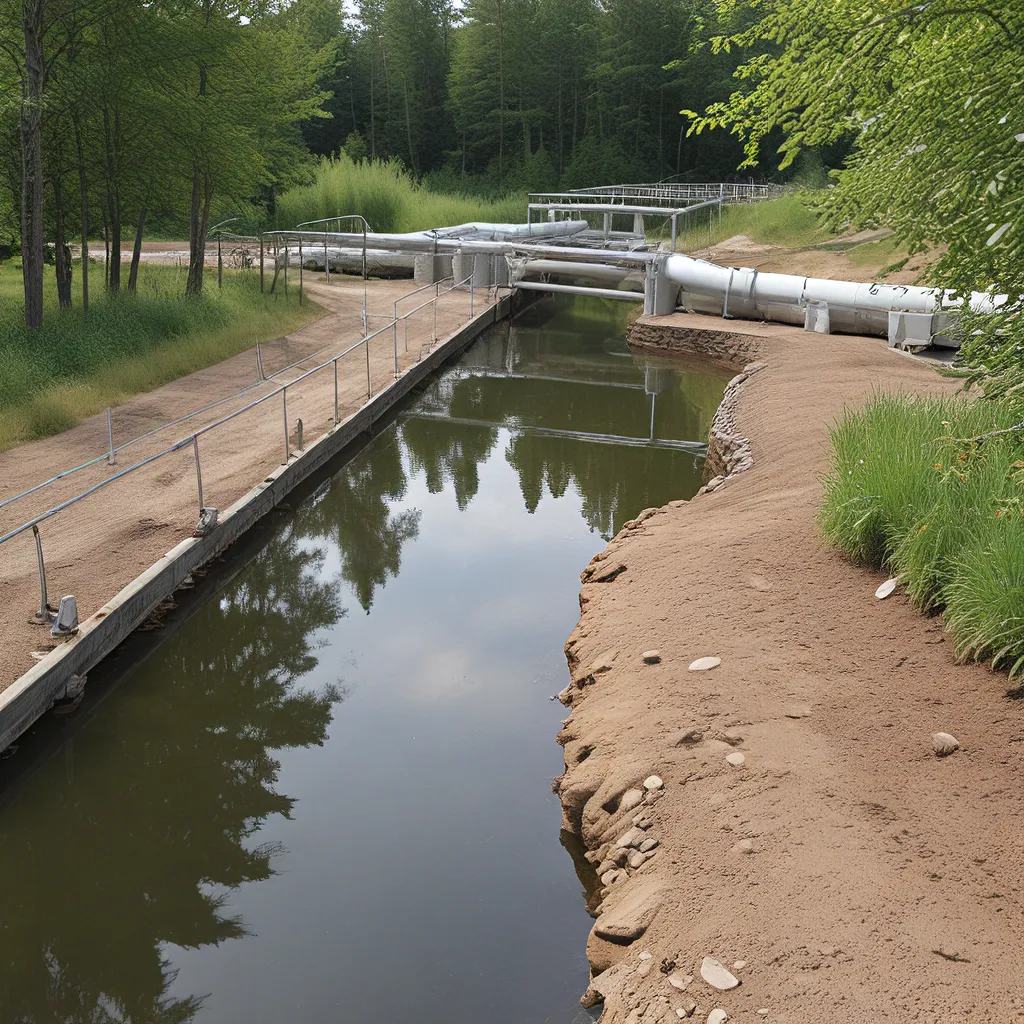
As someone who’s always been fascinated by the intricate dance between nature and technology, I’ve been closely following the growing movement around nature-based solutions (NbS) – and let me tell you, it’s a real game-changer when it comes to the world of wastewater treatment.
Now, I know what you might be thinking: “Wastewater treatment? Sounds about as exciting as watching paint dry.” But trust me, there’s a whole lot more to it than just flushing and forgetting. In fact, the way we approach this crucial infrastructure can have a massive impact on the health of our communities and the environment.
Rethinking the Traditional Approach
For decades, the standard approach to wastewater treatment has been pretty straightforward: build massive, energy-hungry treatment plants that use a whole lot of chemicals and machinery to, well, turn our dirty water into something a little less dirty. And while this method has certainly gotten the job done, it’s also come with its fair share of drawbacks.
For starters, these centralized systems are often incredibly expensive to construct and maintain, putting a heavy financial burden on local governments and ratepayers. Not to mention, they’re notoriously vulnerable to disruptions, whether it’s a natural disaster or a good old-fashioned power outage. And let’s not forget about the environmental impact – all that energy consumption and chemical usage can really take a toll on the delicate ecosystems that receive the treated wastewater.
Enter Nature-Based Solutions
But what if I told you that there’s a better way? That’s where NbS come into play. These innovative approaches harness the power of nature itself to tackle our wastewater challenges in a more sustainable and cost-effective manner.
The basic idea is simple: instead of relying solely on energy-intensive mechanical systems, we can incorporate natural elements like wetlands, ponds, and constructed treatment marshes to do the heavy lifting. These “living infrastructure” systems use the natural processes of plants, microbes, and soil to remove pollutants, manage stormwater, and even produce valuable byproducts like biomass and biofuel.
And the benefits don’t stop there. NbS can also provide a range of additional ecosystem services, like habitat creation, carbon sequestration, and recreational opportunities for the surrounding community. It’s a win-win-win situation!
Successful Case Studies
Of course, implementing NbS for wastewater treatment isn’t as simple as just throwing some plants in a pond and calling it a day. It takes careful planning, design, and execution to ensure that these systems are working at their full potential. But the good news is that there are already plenty of successful case studies to draw inspiration from.
Take, for example, the Decentralized Wastewater Treatment Systems (DWAT) initiative in India. By harnessing the power of constructed wetlands, anaerobic digesters, and planted filter beds, these small-scale, community-based systems are able to treat wastewater in a much more cost-effective and ecologically-integrated way than traditional centralized plants. And the best part? The treated water can even be reused for irrigation or other non-potable purposes, helping to alleviate water scarcity in water-stressed regions.
Or how about the Sejong Special Self-Governing City in South Korea? As part of a major urban development project, this city has embraced a suite of low-impact development (LID) and eco-friendly rainwater management strategies, including bioswales, rain gardens, and pervious paving. Not only are these NbS helping to reduce stormwater runoff and recharge groundwater, but they’re also playing a key role in mitigating urban heat island effects and improving overall livability for the city’s residents.
Overcoming Challenges and Skepticism
Of course, as with any emerging field, there are still plenty of challenges and skepticism surrounding the use of NbS for wastewater treatment. Some experts argue that the outcomes of these nature-based approaches can be more difficult to predict and control than traditional engineered systems, making them a riskier investment for cash-strapped municipalities.
And then there’s the issue of scale – while NbS may work well for smaller, decentralized applications, can they really be scaled up to handle the massive volumes of wastewater generated by large cities and industrial hubs? It’s a fair question, and one that’s still being actively debated by researchers and policymakers.
But here’s the thing: even if we don’t have all the answers yet, the potential benefits of NbS are simply too significant to ignore. And with continued research, innovation, and on-the-ground experimentation, I’m confident that we’ll be able to overcome these hurdles and unlock the full potential of nature-based wastewater treatment.
A Greener, More Resilient Future
At the end of the day, it’s clear that the future of wastewater management lies in embracing a more holistic, nature-centric approach. By tapping into the amazing power of natural processes and ecosystems, we can not only improve the quality of our water, but also enhance the resilience and sustainability of our communities as a whole.
And who knows, maybe one day we’ll even be able to turn our wastewater into a valuable resource, using it to grow food, generate energy, or even brew a refreshing craft beer. (Okay, maybe that last one is a bit of a stretch, but a guy can dream, right?)
So if you’re ready to ditch the concrete and chemicals and start building back better with nature-based solutions, I say let’s do it. The future of wastewater treatment is green, and it’s time we all get on board. After all, as the old saying goes, “when life gives you wastewater, make nature-based solutions.”